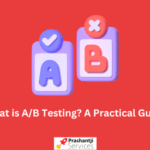Are you tired of investing time and money into digital marketing campaigns that don’t seem to deliver the results you’re after? We hear you. As technology continues to evolve, it can be challenging to keep up with all the latest trends and strategies for maximizing your ROI from digital marketing. But fear not! In this blog post, we’ve compiled eight tried-and-true methods for getting more bang for your buck out of your online advertising efforts. So grab a cup of coffee, sit back, and get ready to take notes – because these tips are about to revolutionize the way you approach digital marketing.
What is ROI and How it works?
ROI, or return on investment, is a key metric for evaluating the effectiveness of your digital marketing campaigns. It measures the amount of revenue generated from a given campaign or activity, divided by the cost of that campaign or activity. In other words, it tells you how much profit you made from your marketing efforts.
There are several ways to calculate ROI, but the most common way is to simply divide the total revenue generated by the cost of the campaign. For example, if you spent $1,000 on a digital marketing campaign and it generated $10,000 in sales, then your ROI would be 10%.
ROI formula: ROI = (Gain from Investment – Cost of Investment) / Cost of Investment
In the digital marketing world, ROI is an important metric to track because it allows marketers to determine which campaigns are driving the most sales and revenue. It also helps them identify which activities are not producing the desired results so they can make adjustments accordingly.

Importance of ROI
It is important to understand the concept of ROI or return on investment when investing in digital marketing. This metric allows businesses to see how effective their digital marketing campaigns are in terms of generating leads or sales. A high ROI means that your digital marketing campaign is working well and you are getting a good return on your investment. There are a number of ways to improve your ROI from digital marketing, which we will outline below.
1. Keep Track of Your Metrics: You should track your digital marketing campaigns closely to ensure that you are getting the most out of them. This may include tracking metrics such as page visits, leads, sales and more.
2. Analyze Your Results: Once you have tracked your campaigns, analyze the results to identify areas for improvement. This could include changing the content that you are promoting or targeting a different audience group.
3. Test Different Strategies: Try testing different strategies to find out which works best for your business and its objectives. For example, you could try running multiple campaigns at once or trying different ad formats like text ads, display ads or videos.
4. Optimize Content for SEO: To maximize ROI on digital marketing it is important to optimize your content for search engine optimization (SEO). By doing so you can ensure that your content is seen by relevant users who are likely to be interested in what you have to offer.
How do you calculate ROI for digital marketing?
There are a few different ways to calculate ROI for digital marketing:
1. Cost per lead: This measures how much it costs you to generate a new lead through your digital marketing efforts. To calculate this, divide your total cost of digital marketing by the number of new leads generated.
For example, if you spend $1,000 on digital marketing and generate 10 new leads, your cost per lead would be $100.
2. Cost per acquisition: This measures how much it costs you to acquire a new customer through your digital marketing efforts. To calculate this, divide your total cost of digital marketing by the number of new customers acquired.
For example, if you spend $1,000 on digital marketing and acquire 5 new customers, your cost per acquisition would be $200.
3. Return on investment (ROI): This measures the amount of profit generated from your digital marketing efforts versus the amount spent on them. To calculate this, deduct all costs associated with digital marketing from the total revenue generated from those efforts. Then divide that number by the total cost of digital marketing to get your ROI percentage.
For example, if you spend $1,000 on digital marketing and generate $2,500 in revenue from those efforts, your ROI would be 150%.
By calculating your ROI for each digital marketing effort you undertake, you can track which activities are most successful and focus more on those channels for better results over time.

How to Track Your Digital Marketing ROI
There are a number of ways to track your digital marketing ROI. One way is to track the number of leads that are generated from each digital marketing campaign. Another way is to track the number of sales that are made as a result of each campaign. Additionally, you can also track the amount of traffic that is generated to your website from each campaign. You can also look at the conversion rate for each campaign to see how many people who visit your site take the desired action.
Finally, you can use analytics tools such as Google Analytics to track the performance of your digital marketing campaigns. This will provide you with information on how many people are visiting your website, where they’re coming from, how long they stay on the page, and other important metrics. With this data, you can better understand which campaigns are working and which ones need to be tweaked or changed.
Identify Your Target Audience
Your target audience is the foundation of your digital marketing strategy. Once you know who you’re trying to reach, you can tailor your content, campaigns, and overall approach to more effectively engage them.
There are a few key ways to identify your target audience:
1. Define your buyer – A buyer persona is a semi-fictional representation of your ideal customer based on market research and real data about your existing customers. When creating your buyer persona(s), be sure to include information like demographics, behaviors, motivations, and goals.
2. Look at your existing customer base – Take a look at who’s already buying from you or engaging with your brand. You can segment them by factors like geography, age, gender, interests, or even how they found out about you. This will give you a good starting point for building out your target audience.
3. Use market research – If you don’t have any existing customers or data to work with yet, market research can be a helpful way to learn more about who might be interested in what you have to offer. There are a number of different ways to do this, from online surveys to focus groups.
4. Keep an eye on your competition – See who they’re targeting and how they’re going about it. This can give you some valuable insights into who else might be interested in what you have to offer.
Once you’ve identified your target audience, you can start to tailor your content and campaigns accordingly. Knowing who you’re trying to reach will make it easier for you to create effective strategies that will help you engage and convert them into paying customers.
Monitor, Analyze, & Improve Your Campaigns
Digital marketing is all about driving ROI. To get more ROI from your digital marketing campaigns, you need to monitor, analyze, and improve them on an ongoing basis.
Here are some tips on how to do just that:
1. Monitor your campaigns closely. Track your results and KPIs on a regular basis. This will help you identify what’s working and what’s not.
2. Analyze your data and assess your performance against your goals. This will help you determine where you need to make improvements.
3. Make continuous improvements to your campaigns. Test new ideas and strategies regularly to see what works best for your business.
By following these tips, you can ensure that your digital marketing campaigns are always driving ROI for your business.

8 proven strategies to get more ROI from digital marketing
Digital marketing is one of the most efficient and effective ways to connect with customers and promote your business. But how do you actually measure the ROI of your digital marketing campaigns? In this blog post, we’ll share some proven strategies to help you get more ROI from digital marketing.
1. Set clear goals and objectives for your campaigns.
- When you know what you want to achieve, it’s easier to measure and track your progress. Make sure your goals are specific, measurable, achievable, relevant, and time-bound (SMART).
2. Choose the right metrics.
- There are a number of different metrics you can track, but not all of them will be relevant to every campaign or business. Choose the metrics that will give you the most insights into your campaigns’ performance.
3. Use data-driven decision making.
- Make sure you’re basing your decisions on data rather than gut feeling. Look at the numbers to see what’s working and what’s not, and make adjustments accordingly.
4. Test and optimize continuously.
- Testing is essential to improve your results over time. Try different tactics and see what works best for your business. Then, keep testing and optimizing to keep improving your results.
5. Focus on quality leads.
- Getting more leads isn’t always the answer. Focus on generating leads that are most likely to convert into customers by using targeted campaigns and segmenting your audience.
6. Invest in customer retention.
- Retaining existing customers is much more cost-effective than acquiring new ones, so make sure you invest in customer retention strategies such as loyalty programs and personalized content.
7. Track and measure all of your efforts.
- Make sure you’re tracking all of your activities (e.g., email campaigns, social media posts, etc.) to see which ones are working best for you. This will help you figure out where to focus your efforts and budget for maximum ROI.
8. Measure long-term results over short-term ones.
- It’s easy to get caught up in the short-term results, but don’t forget to look at the long-term results too. This will help you understand how your efforts are paying off in the long run and give you a better picture of your overall ROI from digital marketing campaigns.
Conclusion
Digital marketing is a powerful tool to reach more customers and generate higher returns on investment. By following the eight tips outlined here, you can create an effective digital marketing strategy that will capitalize on current trends and maximize your ROI. Don’t be afraid to experiment with different strategies; you may find one that works even better than what you have in place now. With the right plan in place, you’ll soon see great results from your digital marketing efforts!








